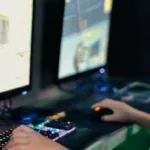Jensen Huang, NVIDIA’s President and CEO, is slated to deliver the keynote again at ACM SIGGRAPH, the premier conference for computer graphics and interactive techniques, this year. For those who have never seen a Jensen Huang keynote, you’re in for a treat because this year promises to be far more interesting. His talk will likely cover a huge change in the creation of the industrial metaverse which is that the Pixar technology Universal Scene Description (USD), which creates objects in the metaverse, is becoming a standard, OpenUSD, and the formation of the Alliance for Open Universal Scene Description (AOUSD) is the organization established to manage the standard.
Let’s talk about why having a standard for metaverse items is important and what you’re likely to see in Huang’s keynote at SIGGRAPH on August 8th.
The critical need for OpenUSD
A critical part of making the metaverse useful is to be able to create elements that can be universally placed in any metaverse instance. Without these universal elements, anyone building a metaverse instance would have to create everything from scratch. This would mean difficult-to-manage variances between the growing number of metaverse instances and tools. A chair should have the same attributes whether it is used in Google’s metaverse, Meta’s metaverse, or in NVIDIA’s Omniverse (NVIDIA’s version of a metaverse).
Creating a standard that forces each instance to use the same elements should not only make the results far more accurate, but they should also reduce the costs related to creating the metaverse instance and maintaining it. You can then rely on repositories of already-created elements to build out your metaverse instances without having to create every element from scratch. This would save massive amounts of time and money that would otherwise be wasted reinventing the wheel for each instance.
OpenUSD is just such a standard and it evolved from some incredible work out of Pixar. It should dramatically increase the speed that metaverse instances can be created and allow for far higher similarities between instances. This could reduce, if not eliminate, the kind of unfortunate errors that likely would result from metaverse elements that should be the same but weren’t.
The AOUSD creation of a standard governing body is supported by Pixar (of course), NVIDIA, Adobe, Apple, and Autodesk, with others expected to join shortly. The eventual result will be billions of common objects that can be used like building blocks to create ever more realistic and accurate metaverse models for simulation, entertainment, and analysis.
NVIDIA at SIGGRAPH 2023
While OpenUSD and AOUSD will be a major portion of Huang’s keynote, I expect he will also focus on updates to NVIDIA’s Omniverse product and those who are using it. Of particular interest will be any update on Earth 2, the mammoth metaverse project that is eventually expected to simulate the weather and environmental aspects of our planet to better predict, mitigate, and alert us to climate events.
I expect he will also cover where these tools are being successfully used, what the benefits of using them have been, and to highlight some interesting Omniverse implementations at more factories, office buildings, and even on huge reconstruction efforts that will be needed in Ukraine. In fact, Ukraine might make an interesting test case for just how far metaverse planning could go to create a better and more defensible urban structure than pre-war planning had created.
At SIGGRAPH, there will be discussions on metaverse conferencing, metaverse educational tools, and on advances in telepresence. I expect Huang will talk about some if not all of these as well. Other areas to look for, given the ongoing actors and writers strike, is how this technology can be used to create TV shows and movies, and how to blend AI to help creators more quickly and less expensively create monetized content.
Some of the more interesting, advanced topics include communicating with real-time digital humans (ever wanted to really chat with an NPC?), and how this technology could revolutionize disparate industries like real estate and healthcare. They will even cover advances in self-driving cars and robotics at the event, a topic that Huang has previously loved to talk about given NVIDIA’s impressive work in that space.
Wrapping up:
While SIGGRAPH starts on Sunday, August 6th, the major event to see is Jensen Huang’s keynote on August 8th in which the past, present, and much of the future of the metaverse will be discussed. Critical to that future is the formation of AOUSD and the more universal use of OpenUSD standards as the world pivots to the concept of a metaverse and successful tools like NVIDIA’s Omniverse begin to reach their full potential.
SIGGRAPH looks to be a fascinating show this year and Huang’s keynote is a do-not-miss event if you want to see the future of the metaverse and how it will increasingly impact your life and business.








